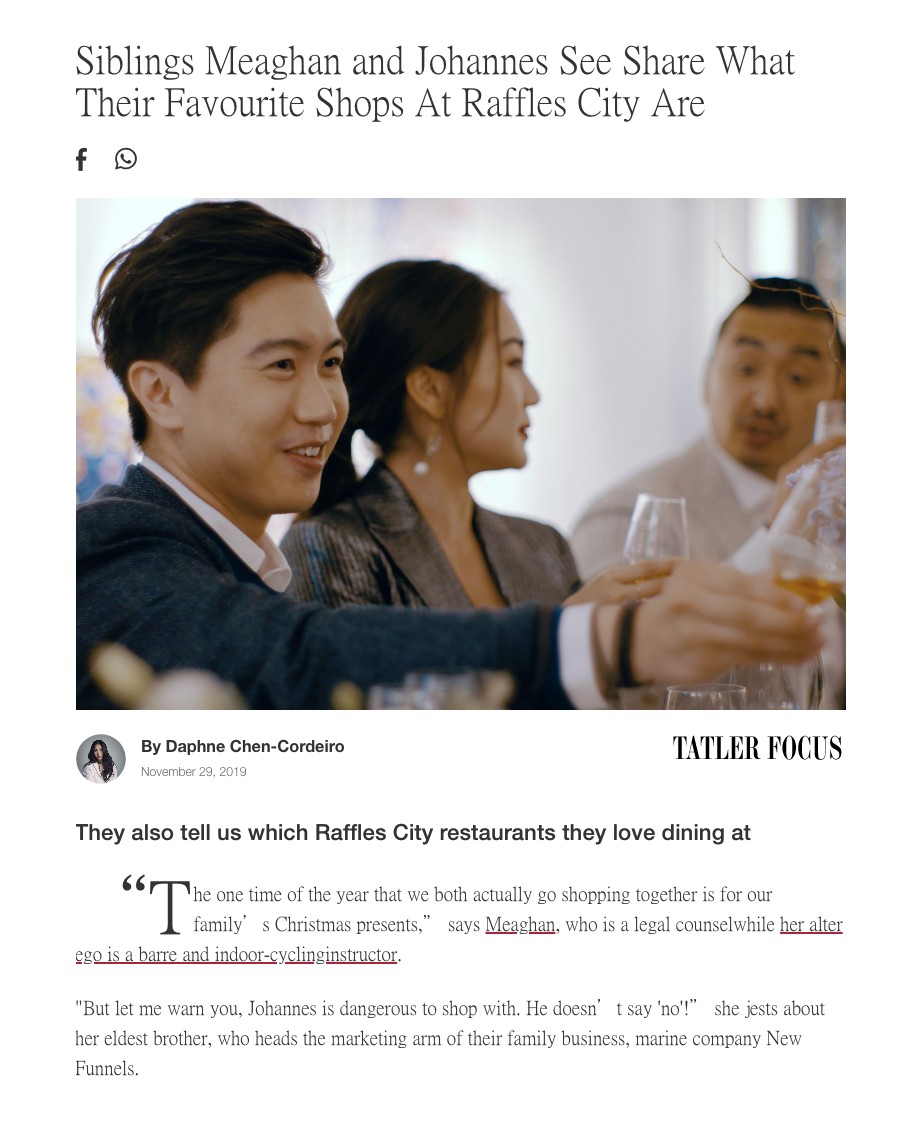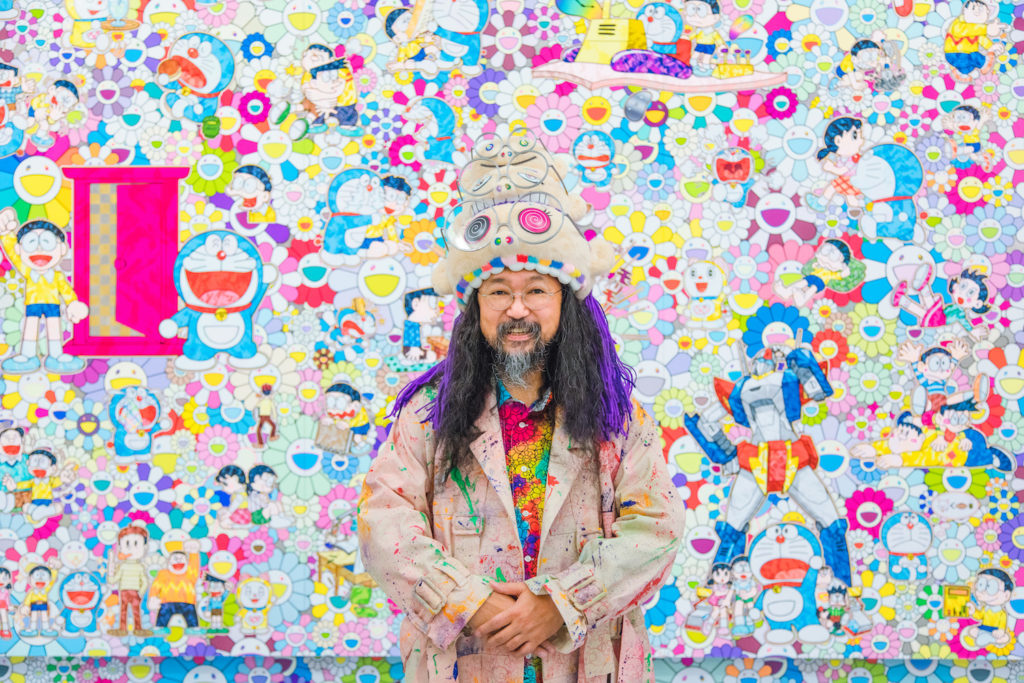
All About Artists
The Crazy, Surreal and Fantastical Universe of Takashi Murakami
Discover some of the fascinating characters that appear in Takashi Murakami's captivating works
By Sarah
Takashi Murakami is arguably one of the most renowned contemporary Japanese artists. Working with fine art mediums (painting and sculpture) as well as conventional commercial mediums (fashion, merchandise, and animation), the artist is known for blurring the line between high and low art. He coined the style 'superflat', which combines graphic practices of contemporary Japanese culture with flattening print and painting traditions of its rich past.
Murakami’s works often feature characters of the artist’s creation, which reoccur in different forms, and are said to each represent a different part of his psyche. Keep reading on to learn more about some of the characters that make up the crazy, surreal and fantastical universe of Takashi Murakami!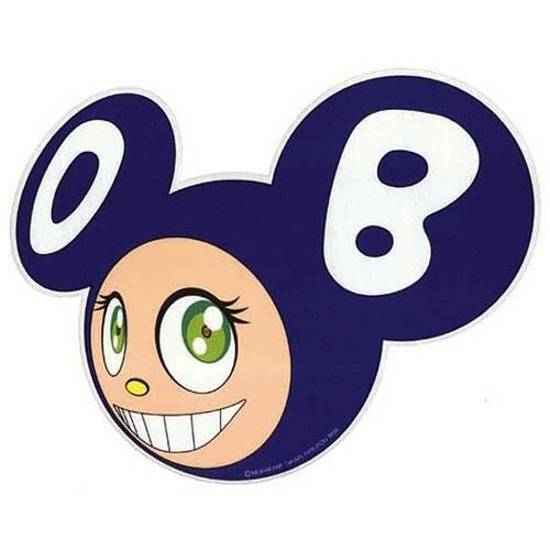 Mr. DOB by Takashi Murakami
Mr. DOB by Takashi Murakami
Murakami’s most famous character, Mr. DOB is a bright-eyed cartoon character who most closely resembles Mickey Mouse, and whose name derives from the Japanese slang phrase “dobojite” or “why?”. This question reflects Murakami’s dissenting view of consumer society as lifeless and empty. The perky-eared, button-nosed creature takes many shapes in Murakami’s sculptures and precisely rendered paintings—from a smiley-faced innocent to an amorphous blob bearing images.
Said to be Murakami’s alter-ego, the character has become a pop culture phenom, appearing a number of Murakami’s collaborations, such as his 2003 partnership with Louis Vuitton in which the character was embellished on select luxury handbags, as well as Kanye West’s ‘Good Morning’ music video in 2008.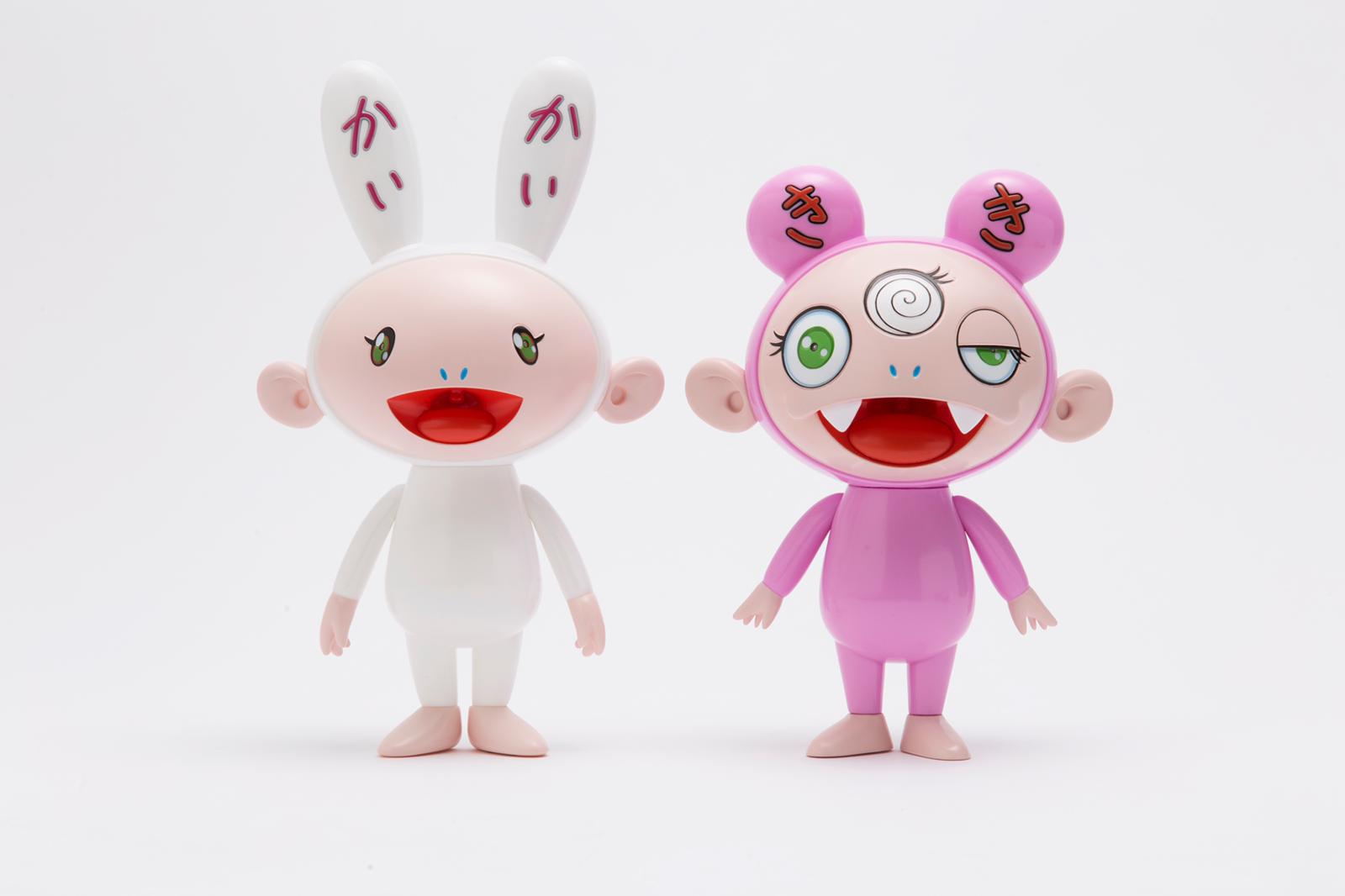
KaiKai, Kiki by Takashi Murakami
These two impish characters reappear frequently in Murakami’s work both as the artist’s spiritual guardians, as well as the official mascots of his production company. Kaikai appears to be a sweet kid in a white rabbit costume, while Kiki is a wild and naughty character that has a pink outfit, three eyes and fangs.
Just like Jekyll and Hyde, ying and yang or the alpha and the omega, these two characters are commonly depicted together in a humorous form: Kaikai is located on the left and with his/her mouth shut. Kiki, otherwise, is on the right side of his mate and has his mouth open. With names that translate roughly as “bizarre yet refined”, this is an homage to the famed style of 16th century Japanese artist Kano Eitoku, whose works were said to be powerful yet charged with sensibilities at the same time.
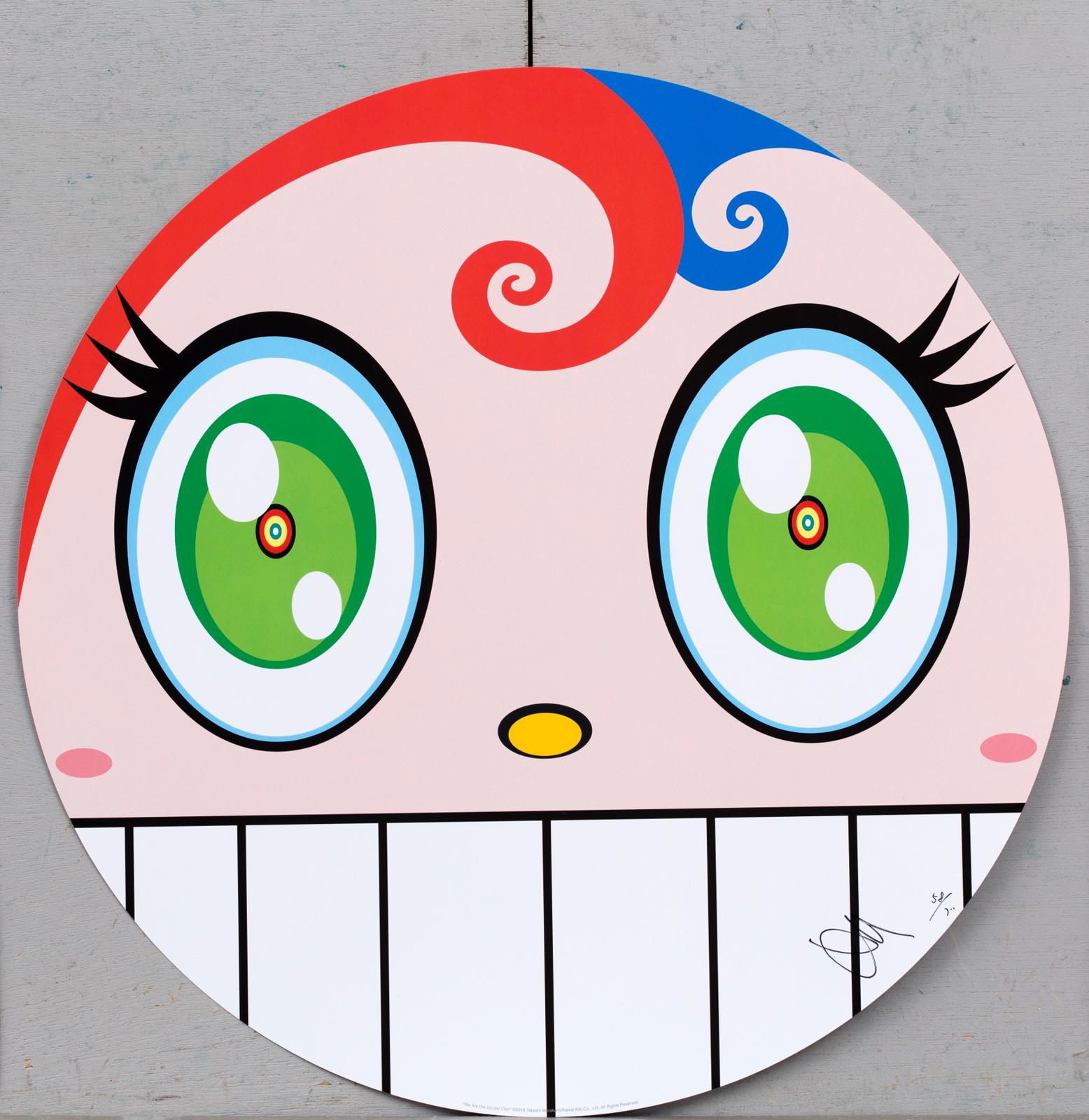
We Are The Square Jocular Clan by Takashi Murakami
https://www.odetoart.com/?p=artwork&t=&a=20077,We%20are%20the%20Square%20Jocular%20Clan%20&artist=Takashi%20Murakami
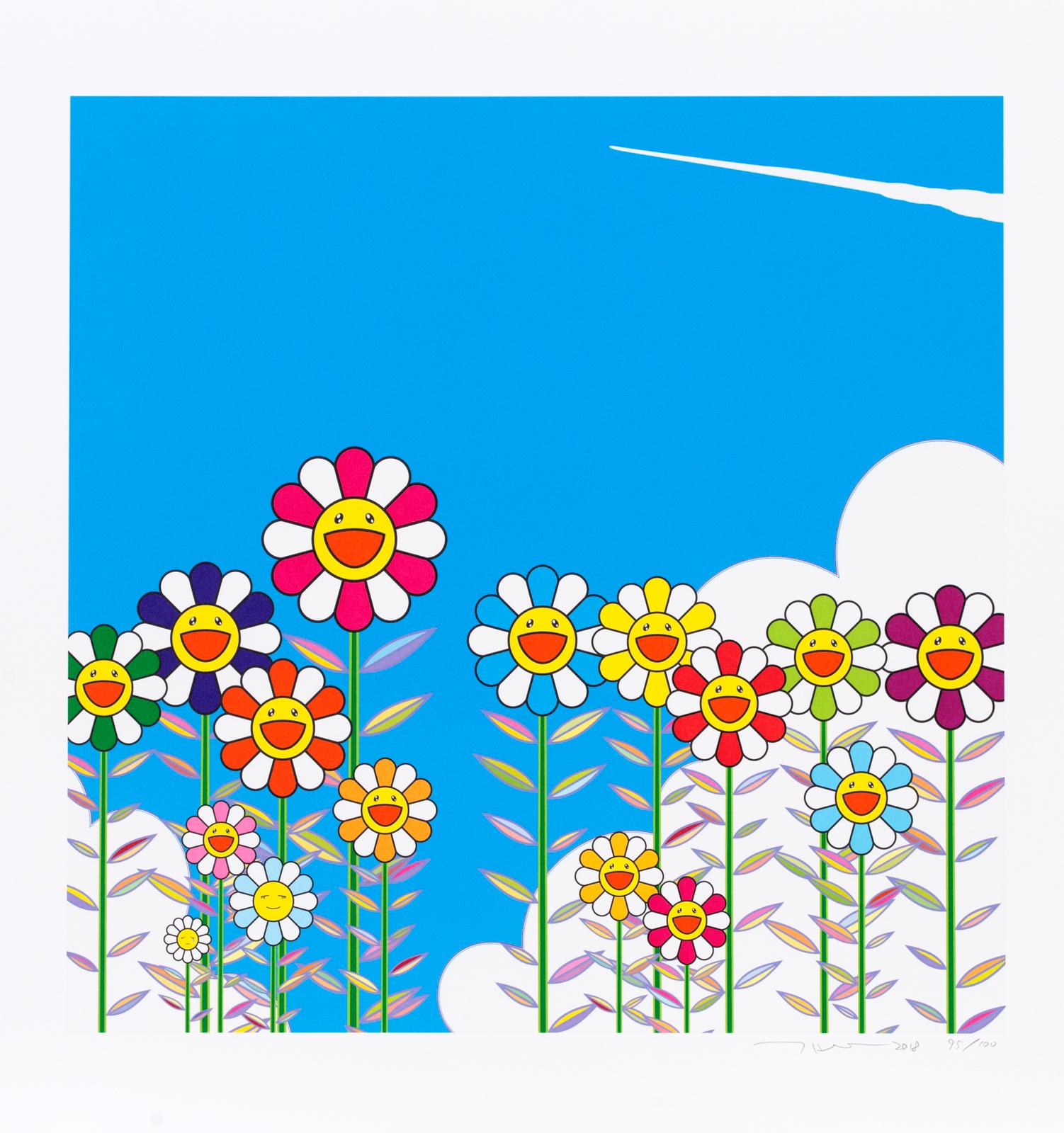
Vapor Trail In The Blue Summer Sky by Takashi Murakami
https://www.odetoart.com/p=artwork&a=20080,Vapor%20Trail%20in%20the%20Blue%20Summer%20Sky&artist=Takashi%20Murakami
Murakami’s fascination with flowers began when he worked as a teacher in the 1980s, and would buy fresh blooms every other day for his students to practice drawing. After repeating his exercise for nine years, he was fascinated by the individual personalities of flowers. With 12 candy-colored petals and beaming smiles, Murakami’s flowers are celebrated for their display of joy and innocence.
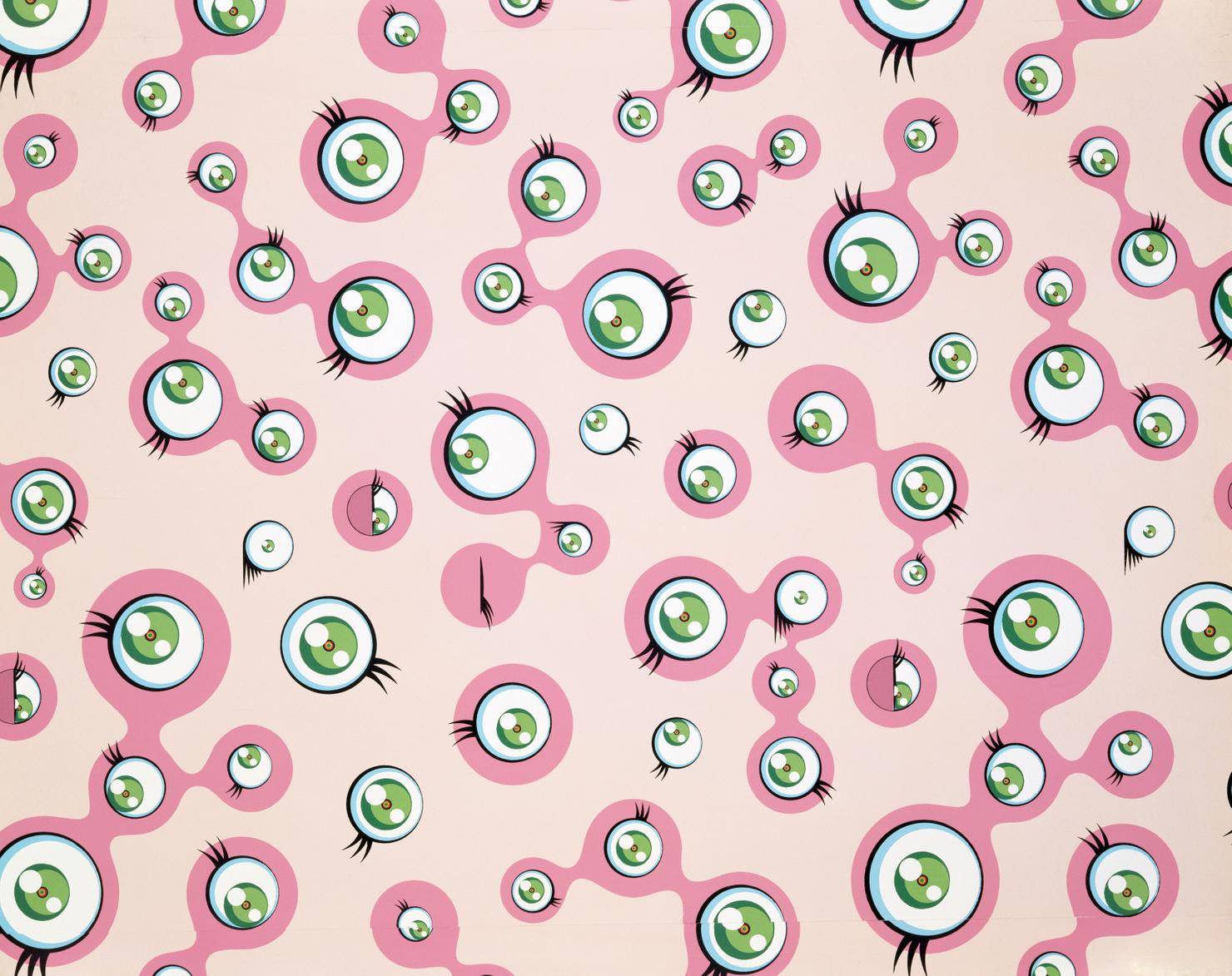
Jellyfish Eyes by Takashi Murakami
Another recurring character in Murakami’s works, it is modeled after a Japanese monster called Hyakume (Hundred Eyes), and features numerous pink and khaki green eyes. Although it is colorful and vivid, the work’s subject matter evokes a sense of tension as it references Japanese kaijū (monster) movies. This character also lends its name to Murakami's first feature-length movie, a CGI-powered extravaganza that brings the artist's fantastical characters to life.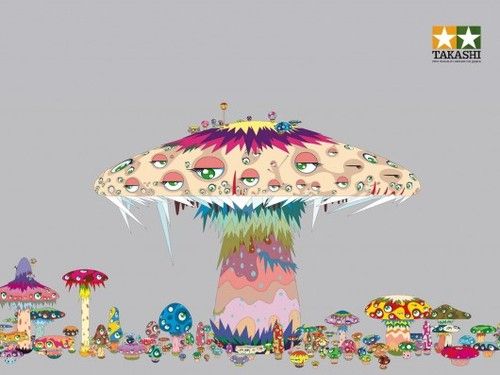
Mushroom by Takashi Murakami
Anthropomorphized mushrooms, their caps dotted with blinking eyes, feature often in Murakami’s works. Mushrooms have long been revered in Japan for their gastronomic qualities, diversity, and reference to longevity.
However, within the context of post-WWII Japan, the mushroom is also an ominous reminder of the mushroom-like cloud produced by the nuclear bombs dropped on Hiroshima and Nagasaki by the United States in 1945. The mushroom's mutant status evokes the horrific and lasting side-effects of nuclear radiation. Their whimsical presentation is a subtle critique of Japan's youth-obsessed culture in which both innocence and cuteness are prized, and this notion manifests through their bright colors and cartoonish forms.
Click here https://odetoart.com/?p=artist&a=301,Takashi%20Murakami to discover more about Takashi Murakami and Ode To Art's collection of his whimsical and captivating works.
Murakami’s works often feature characters of the artist’s creation, which reoccur in different forms, and are said to each represent a different part of his psyche. Keep reading on to learn more about some of the characters that make up the crazy, surreal and fantastical universe of Takashi Murakami!
Mr. DOB
 Mr. DOB by Takashi Murakami
Mr. DOB by Takashi MurakamiMurakami’s most famous character, Mr. DOB is a bright-eyed cartoon character who most closely resembles Mickey Mouse, and whose name derives from the Japanese slang phrase “dobojite” or “why?”. This question reflects Murakami’s dissenting view of consumer society as lifeless and empty. The perky-eared, button-nosed creature takes many shapes in Murakami’s sculptures and precisely rendered paintings—from a smiley-faced innocent to an amorphous blob bearing images.
Said to be Murakami’s alter-ego, the character has become a pop culture phenom, appearing a number of Murakami’s collaborations, such as his 2003 partnership with Louis Vuitton in which the character was embellished on select luxury handbags, as well as Kanye West’s ‘Good Morning’ music video in 2008.
Kaikai Kiki

KaiKai, Kiki by Takashi Murakami
These two impish characters reappear frequently in Murakami’s work both as the artist’s spiritual guardians, as well as the official mascots of his production company. Kaikai appears to be a sweet kid in a white rabbit costume, while Kiki is a wild and naughty character that has a pink outfit, three eyes and fangs.
Just like Jekyll and Hyde, ying and yang or the alpha and the omega, these two characters are commonly depicted together in a humorous form: Kaikai is located on the left and with his/her mouth shut. Kiki, otherwise, is on the right side of his mate and has his mouth open. With names that translate roughly as “bizarre yet refined”, this is an homage to the famed style of 16th century Japanese artist Kano Eitoku, whose works were said to be powerful yet charged with sensibilities at the same time.

We Are The Square Jocular Clan by Takashi Murakami
https://www.odetoart.com/?p=artwork&t=&a=20077,We%20are%20the%20Square%20Jocular%20Clan%20&artist=Takashi%20Murakami
Flowers

Vapor Trail In The Blue Summer Sky by Takashi Murakami
https://www.odetoart.com/p=artwork&a=20080,Vapor%20Trail%20in%20the%20Blue%20Summer%20Sky&artist=Takashi%20Murakami
Murakami’s fascination with flowers began when he worked as a teacher in the 1980s, and would buy fresh blooms every other day for his students to practice drawing. After repeating his exercise for nine years, he was fascinated by the individual personalities of flowers. With 12 candy-colored petals and beaming smiles, Murakami’s flowers are celebrated for their display of joy and innocence.
Jellyfish Eyes

Jellyfish Eyes by Takashi Murakami
Another recurring character in Murakami’s works, it is modeled after a Japanese monster called Hyakume (Hundred Eyes), and features numerous pink and khaki green eyes. Although it is colorful and vivid, the work’s subject matter evokes a sense of tension as it references Japanese kaijū (monster) movies. This character also lends its name to Murakami's first feature-length movie, a CGI-powered extravaganza that brings the artist's fantastical characters to life.
Mushrooms

Mushroom by Takashi Murakami
Anthropomorphized mushrooms, their caps dotted with blinking eyes, feature often in Murakami’s works. Mushrooms have long been revered in Japan for their gastronomic qualities, diversity, and reference to longevity.
However, within the context of post-WWII Japan, the mushroom is also an ominous reminder of the mushroom-like cloud produced by the nuclear bombs dropped on Hiroshima and Nagasaki by the United States in 1945. The mushroom's mutant status evokes the horrific and lasting side-effects of nuclear radiation. Their whimsical presentation is a subtle critique of Japan's youth-obsessed culture in which both innocence and cuteness are prized, and this notion manifests through their bright colors and cartoonish forms.
Click here https://odetoart.com/?p=artist&a=301,Takashi%20Murakami to discover more about Takashi Murakami and Ode To Art's collection of his whimsical and captivating works.


.jpg)
